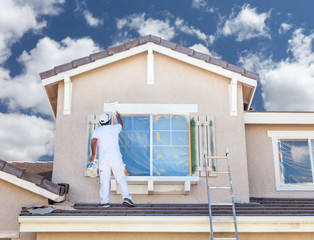You’ve spotted cracks in your foundation and are considering calling in a professional. But what are your options?
It’s important to act fast when you spot signs of a foundation problem. Otherwise, it can snowball into a much bigger issue. Some of the more common methods for repairing a foundation are concrete pilings, helical piers, and steel piers. Click https://www.sugarlandfoundationrepair.com/ for more information.
Concrete slab foundations are the most common type of residential foundation. They are typically constructed by placing reinforced concrete on top of profiled steel decking (re-entrant or trapezoidal). Slabs are made of concrete because it can reduce floor deflections and vibrations, provide fire protection and achieve the thermal mass required in passive design.
The most common cause of cracking in slabs and poured masonry walls is settling. While settling is inevitable, normal engineering practices will prevent structural damage.
If a slab or poured masonry wall is experiencing a crack, it is important to take the time to assess the crack and determine what type of repair is necessary. Small cracks are normal and may not require any action, but if the crack is getting larger or the pattern appears to be changing, it is recommended that a professional assessment be undertaken.
If the cracks in a concrete slab are accompanied by heaving or movement in the foundation, it is likely that a more extensive and more costly repair is needed. In these cases, it is often necessary to remove the slab and replace it. This is a large job that requires the use of heavy equipment, such as a jackhammer. In addition, it is often necessary to install a temporary support system to hold the new slab until the soil can be stabilized and re-graded.
To address the cracks in a concrete slab, it is recommended to start by cleaning the slab of any dirt or debris. Next, use a chisel to widen the crack to one quarter inch and sand out the edges of the crack to make sure it is completely clean. Then, fill the crack with epoxy.
Ensure that the crack is completely dry before applying the epoxy. If you skip this step, the crack will quickly begin to leak again. Finally, once the epoxy has cured, it is possible to give the concrete surface a sealant if you want to improve the appearance of your concrete slab foundation.
When repairing a concrete slab, it is important to remember that concrete is very difficult to match in color, especially when it’s been exposed to the elements for some time. For this reason, it is best to leave the repair to professionals if you have any doubts about how the repairs will look.
Crawl Spaces
When crawl spaces are properly encapsulated, they’re ideal for storage and for protecting the structural members of your house. However, if the structure is not well maintained, moisture and pest infestation may damage floor joists and wooden beams. This could cause the wood to rot and contribute to sagging floors and poor energy efficiency. A crawl space inspection can reveal these issues and help you determine the best course of action.
A crawl space is usually accessed through a hatch in the foundation wall or through a small opening in a closet or utility room. Before entering, it’s important to equip yourself with a good flashlight and sturdy work clothes, as you may need to crawl on the ground. Once inside, look for signs of moisture, such as a musty odor or damp insulation. If you see standing water or rotting wood, you should have it fixed right away to prevent mold growth and structural problems in the living areas above.
Crawl space issues can be caused by several factors, including the type of soil under the house, climate conditions, and the construction of the crawl space itself. In addition, a crawl space can be susceptible to ground movement, such as sinking or shifting. These movements can affect the support of your home’s foundation and lead to cracking in the walls or ceiling. If the cracks are more than an eighth of an inch wide, they might indicate a serious problem that needs to be repaired.
In many cases, sagging or sinking crawl spaces are due to a lack of support or a weak foundation underneath the house. When this occurs, a crawl space repair solution such as helical and steel push piers can be used to restore stability and improve the structural integrity of your house. These repair systems are driven into the stable soil beneath the void or moving crawl space, providing enhanced support and stabilization.
Many companies offer crawl space repair solutions, but it’s important to choose a reputable company that has experience and a solid track record. A reputable contractor will also have the knowledge to inspect and diagnose your crawl space foundation problems and recommend the right repair method.
Basements
Basements can be great rooms for home entertainment, a family room or a home office. But like any other area of the house, they need to be properly insulated and waterproofed.
The type of insulation used depends on the purpose. Unless the basement is being finished, the rim joists should be sealed to prevent air gaps and 1- or 2-inch thick foam board made from extruded polystyrene (XPS) may be applied directly to the walls. Depending on code, R-value requirements and sound-dampening needs, batt insulation can also be added. After the insulation is installed, a stud wall is framed and finished with half-inch drywall. The basement floor is usually concrete. The sanitary sewer and storm sewer access is typically located in the basement, as well as a drain in each window well to prevent water accumulation.
Crack repair methods vary depending on the type of foundation that’s broken. For poured concrete foundations, a flexible, expanding urethane injection method may work. However, cracked block, brick and stone foundations cannot be injected. They can be injected from the outside, or a trench may be dug around each cracked section to install a drainage system with a sump pump that discharges the water into a buried PVC pipe that runs away from the house.
Bowing basement walls can be corrected with tie-backs or a steel-plate wall anchor. The latter is a complicated procedure that involves drilling through your basement wall and driving a threaded rod all the way to the yard. Then a steel plate is bolted to the end of the rod. A contractor can also fill the gap between your basement floor and ground with cement, but this doesn’t address the issue of bowed walls.
If water oozes through the basement floor or joints at the floor and wall, and you’ve plugged obvious leaks, a moisture meter can help find where the problem lies. It might be a problem with the floor joint, the walls or the soil. If the soil is causing the problem, you may need to have a foundation repair company stabilize the basement with carbon fiber-reinforced grids, which can be installed without major excavation or disruption to your home.
Steel Piers
Steel piers, also known as resistance piers, are an effective structural repair solution for most types of foundation settlement. They transfer the load of your home to deeper, stronger soils, avoiding future shifting and settling.
The process of installing steel piers is similar to concrete piers, but is less labor-intensive and time-consuming for your foundation repair contractor. First, remedial brackets are secured to the foundation’s footing. Then, the first push pier (fit with a friction collar to reduce skin friction) is hydraulically driven into the earth by a powerful ram. Once the pier is at the point of refusal, it’s fitted with a guide sleeve to ensure it continues straight down into competent, load-bearing soils. A sleeve also allows the crew to determine the precise loading value of each pier.
When all the steel piers are installed and load tested, your foundation can be lifted onto them. This transfers the load from your foundation to the piers and stabilizes it, allowing drywall cracks to close, exterior brick cracks to stop expanding and the structure to return to its original elevation.
Unlike concrete piers, which can be difficult to install because of their long, narrow design and the need for extensive excavations to place them under your house, the steel piers are more compact, which makes installation easier. Also, because they don’t require as much digging, the repair can be completed in a shorter amount of time.
Another benefit of steel piers is that they’re made from corrosion-resistant materials, which means they’ll last longer than concrete piers. However, it’s important to understand that, while corrosion-resistant materials can extend the life of your piers, they will not eliminate the need for periodic maintenance.
Despite their longer lifespan, both concrete and steel piers can suffer from damage due to environmental factors such as shrinking and swelling clays, poor compaction, improper footer embedding, erosion and more. Both concrete and steel piers can be repaired using methods that involve driving them into competent, load-bearing soils. The repair method that’s best for you depends on the condition of your soil and your budget.




 If you have a lot of junk in your home, getting rid of it all may seem daunting. However, there are a few ways that you can make the process easier and faster. First, you should create an itemized list of all the items you want to get rid of. Then, it would be best if you separated them into heavy and minor categories. This will help you determine the best method of disposal for each item. For example, a heavy item like an old fridge can be donated to a local thrift store or scrap metal recycler. While smaller items can be thrown away in the trash.
If you have a lot of junk in your home, getting rid of it all may seem daunting. However, there are a few ways that you can make the process easier and faster. First, you should create an itemized list of all the items you want to get rid of. Then, it would be best if you separated them into heavy and minor categories. This will help you determine the best method of disposal for each item. For example, a heavy item like an old fridge can be donated to a local thrift store or scrap metal recycler. While smaller items can be thrown away in the trash.
